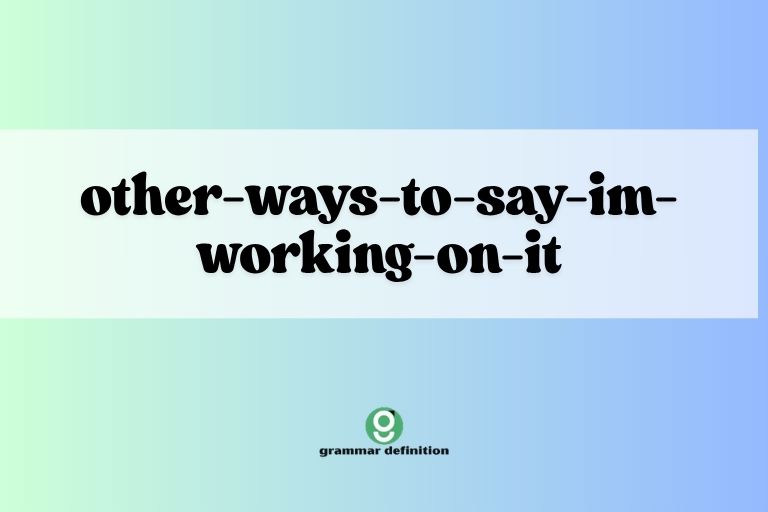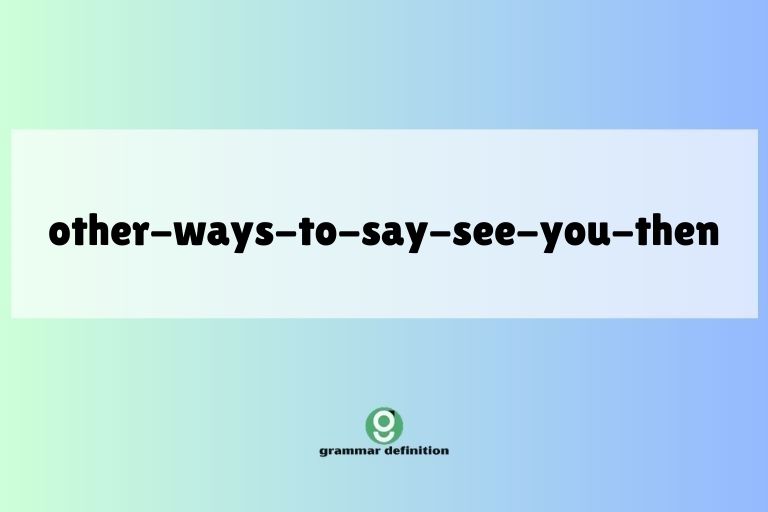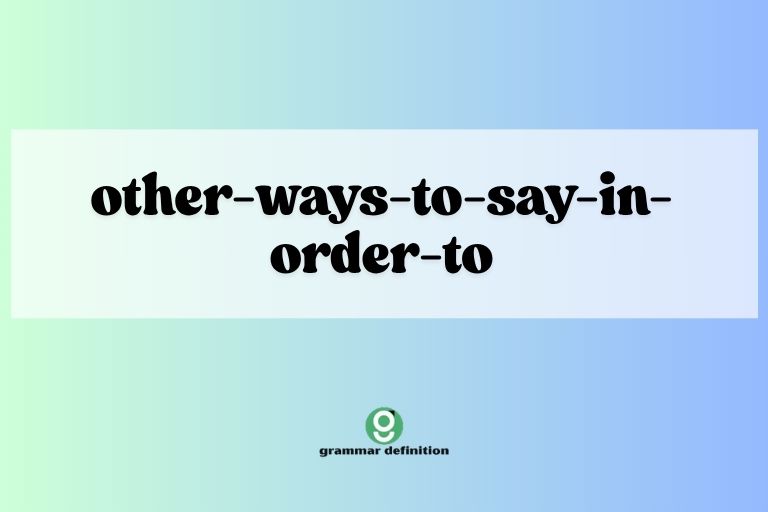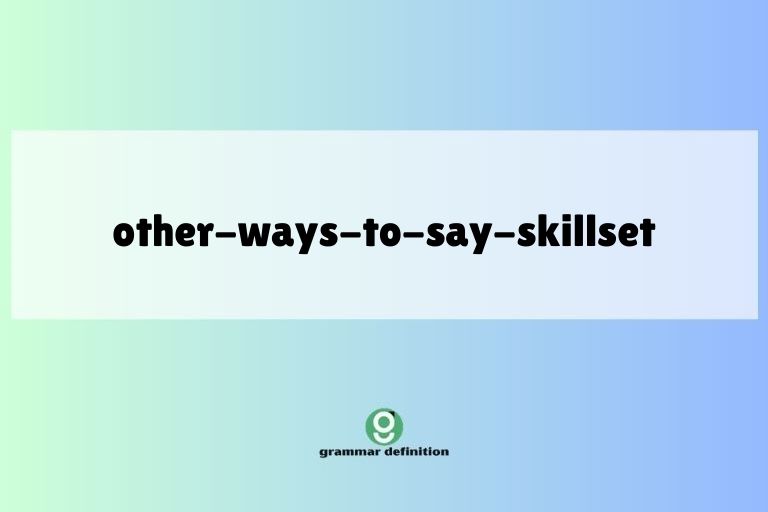Other Ways to Say “I’m Here for You”: A Comprehensive Guide
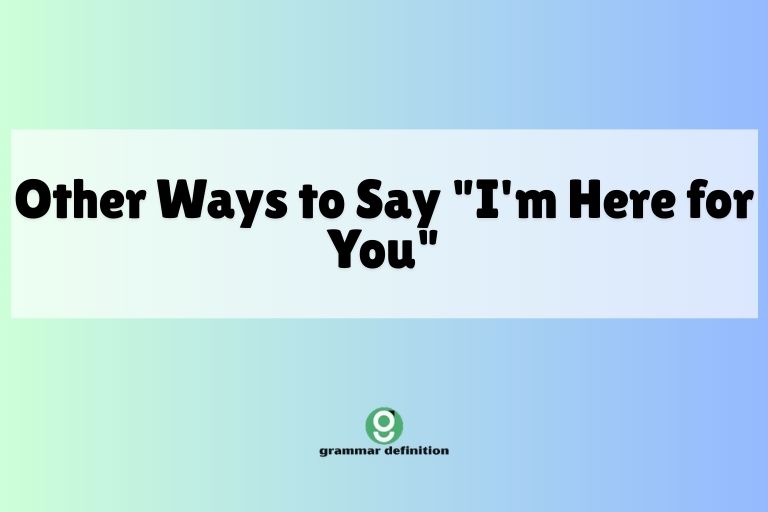
Expressing empathy and support is a crucial aspect of human connection. While “I’m here for you” is a comforting phrase, relying solely on it can sometimes feel repetitive or lack the specific nuance needed in different situations.
This article explores a wide range of alternative phrases and expressions that convey the same sentiment, but with varying degrees of formality, empathy, and context. Understanding these alternatives enhances your ability to offer meaningful support and connect with others on a deeper level.
This guide is beneficial for language learners, writers, counselors, and anyone looking to improve their communication skills and express genuine care for others.
This article provides a comprehensive exploration of alternative phrases to “I’m here for you,” covering their definitions, structural breakdowns, and usage rules. Various examples are provided to illustrate how each phrase can be effectively used in different contexts.
Additionally, common mistakes are addressed, and practice exercises are included to reinforce understanding and application. Advanced topics are also discussed for those seeking a deeper dive into the nuances of empathetic communication.
Table of Contents
- Introduction
- Definition
- Structural Breakdown
- Types and Categories
- Examples
- Usage Rules
- Common Mistakes
- Practice Exercises
- Advanced Topics
- FAQ
- Conclusion
Definition
The phrase “I’m here for you” is a common expression of support and empathy. It signifies a willingness to provide assistance, comfort, or a listening ear to someone in need.
It’s a broad statement of availability, indicating that the speaker is ready to offer whatever support the other person requires. The underlying meaning is a commitment to stand by the person and help them through a difficult situation.
It communicates solidarity, understanding, and a genuine desire to alleviate their burden. The phrase is applicable across various contexts, from personal relationships to professional settings.
However, the effectiveness of “I’m here for you” depends heavily on the context and the relationship between the individuals involved. Sometimes, a more specific and tailored expression of support can be more impactful and reassuring.
The goal is to convey genuine care and a willingness to help in a way that resonates with the person receiving the message. Understanding the nuances of different phrases allows for a more personalized and meaningful interaction.
Structural Breakdown
The basic structure of “I’m here for you” is simple:
Pronoun (I) + Verb (am/’m) + Adverb (here) + Preposition (for) + Pronoun (you)
The pronoun “I” establishes the speaker as the source of support. The verb “am” (or its contraction “‘m”) links the pronoun to the state of being available.
The adverb “here” indicates presence and accessibility. The preposition “for” connects the speaker’s presence to the person receiving support (“you”).
Together, these elements form a concise statement of availability and willingness to assist.
Alternative phrases often maintain this basic structure while substituting different words or adding additional clauses to provide more specific information. For example, “You can always count on me” replaces “I’m here” with “You can always count on me,” maintaining the core message of support but adding a sense of reliability.
Similarly, adding clauses like “If you need anything at all” provides greater detail about the nature of the support being offered. The key is to preserve the underlying meaning of availability and support while adjusting the language to suit the specific situation.
Types and Categories
Different ways of saying “I’m here for you” can be categorized based on the specific type of support they offer or the emotional tone they convey.
Expressions of Availability
These phrases emphasize the speaker’s readiness to listen or assist whenever needed. They focus on making oneself accessible to the other person.
Offers of Assistance
These phrases explicitly offer help with specific tasks or challenges. They are more direct and action-oriented than simple expressions of availability.
Statements of Empathy
These phrases focus on acknowledging and validating the other person’s feelings. They communicate understanding and shared emotion.
Promises of Support
These phrases offer long-term commitment and assurance. They go beyond immediate availability and promise ongoing assistance.
Encouraging Phrases
These phrases aim to uplift and motivate the other person. They focus on building confidence and resilience.
Examples
The following sections provide examples of different ways to say “I’m here for you,” categorized by the types mentioned above. Each example is accompanied by a brief explanation of its specific nuance and context.
Availability Examples
These phrases emphasize your willingness to be there whenever the other person needs you. They’re general offers of support, indicating that you’re available to listen, help, or simply be present.
The table below provides a variety of phrases expressing availability, offering diverse ways to let someone know you’re there for them. Each phrase carries a slightly different nuance, adding depth to your expressions of support.
| Phrase | Nuance | Example Sentence |
|---|---|---|
| I’m always here if you need anything. | General availability, open-ended offer. | “I know you’re going through a tough time, I’m always here if you need anything.” |
| Feel free to reach out anytime. | Encourages the person to contact you without hesitation. | “Things might get overwhelming, but feel free to reach out anytime.” |
| I’m just a phone call away. | Emphasizes ease of contact. | “Don’t hesitate to call, I’m just a phone call away.” |
| I’m available whenever you need me. | Clear and direct statement of availability. | “I’ve cleared my schedule, I’m available whenever you need me.” |
| Don’t hesitate to call if you need anything, day or night. | Emphasizes availability at any time. | “This is a tough situation, don’t hesitate to call if you need anything, day or night.” |
| I’m only a text away. | Highlights a modern and convenient method of contact. | “If you’re feeling down, I’m only a text away.” |
| I’m here to lend an ear. | Specifically offers listening as a form of support. | “If you need to vent, I’m here to lend an ear.” |
| My door is always open. | Offers a welcoming space for conversation or support. | “If you need a place to relax and talk, my door is always open.” |
| I’m around if you want to talk. | Casual and approachable offer of conversation. | “I know things are rough, I’m around if you want to talk.” |
| I’m on your side. | Conveys solidarity and support. | “Whatever happens, I’m on your side.” |
| I’m in your corner. | Similar to “I’m on your side,” emphasizing support and advocacy. | “Don’t worry, I’m in your corner.” |
| You can always count on me. | Highlights reliability and dependability. | “No matter what, you can always count on me.” |
| I’m here to listen, no judgment. | Emphasizes a safe and non-critical listening environment. | “If you need to talk about it, I’m here to listen, no judgment.” |
| I’m present for you. | Focuses on being fully attentive and engaged. | “I know it’s difficult, I’m present for you.” |
| I’m available to help in any way I can. | Broad offer of assistance, leaving the specifics open. | “Let me know what I can do, I’m available to help in any way I can.” |
| I’m thinking of you and here to support you. | Combines thoughts with a clear indication of support. | “I’m thinking of you and here to support you.” |
| I’m just a call away if you need anything at all. | Reiterates the ease of reaching out with an emphasis on any need. | “Remember, I’m just a call away if you need anything at all.” |
| If you need to vent, I’m all ears. | Specifically offers listening as a means of releasing emotions. | “If you need to vent, I’m all ears.” |
| I’m here and ready to assist. | Formal and direct offer of help. | “Please let me know if you require assistance, I’m here and ready to assist.” |
| I’m here, ready to support you in any way possible. | Comprehensive offer to provide various forms of support. | “I am here, ready to support you in any way possible.” |
Assistance Examples
These phrases go beyond simply being available and offer concrete help with specific tasks or challenges. They demonstrate a proactive willingness to alleviate the other person’s burden.
The table below showcases phrases that directly offer assistance, providing tangible ways to support someone. These phrases demonstrate a proactive approach to helping, showing that you’re ready to take action.
| Phrase | Nuance | Example Sentence |
|---|---|---|
| Let me know how I can help. | Open-ended offer of assistance, allowing the other person to specify their needs. | “I’m so sorry to hear about your loss, let me know how I can help.” |
| Is there anything I can do to help with…? | Specific offer of assistance with a particular task. | “Is there anything I can do to help with the funeral arrangements?” |
| I can help you with that. | Direct offer to take on a specific task. | “I can help you with that presentation if you’re feeling overwhelmed.” |
| I’m happy to run errands for you. | Offers practical assistance with everyday tasks. | “I know you’re busy, I’m happy to run errands for you.” |
| Can I take something off your plate? | Offers to relieve the other person of some of their responsibilities. | “You seem stressed, can I take something off your plate?” |
| I’m here to help you get through this. | General offer of support to overcome a difficult situation. | “This is a challenging time, I’m here to help you get through this.” |
| How can I lighten your load? | Offers to reduce the burden the other person is carrying. | “You’re doing so much, how can I lighten your load?” |
| I’m here to assist you in any way possible. | Formal and comprehensive offer of assistance. | “As your colleague, I’m here to assist you in any way possible.” |
| Tell me what you need and I’ll do my best to make it happen. | Emphasizes commitment and willingness to go the extra mile. | “Tell me what you need and I’ll do my best to make it happen.” |
| I’m willing to lend a hand. | Offers practical help and assistance. | “If you need help moving, I’m willing to lend a hand.” |
| Let me take care of that for you. | Offers to handle a specific task or responsibility. | “You look tired, let me take care of that for you.” |
| I’m happy to help with the kids/pets/house. | Offers specific assistance with childcare, pet care, or household chores. | “I know you’re exhausted, I’m happy to help with the kids.” |
| I can handle that task for you, if you’d like. | Offers to take over a specific task, providing relief. | “I see you’re swamped, I can handle that task for you, if you’d like.” |
| If you’re overwhelmed, let me step in. | Suggests taking over when the other person is feeling overburdened. | “If you’re overwhelmed, let me step in and take over some responsibilities.” |
| I can run errands for you this week. | Offers to handle various errands, alleviating the need to do them yourself. | “I know you’re busy, I can run errands for you this week.” |
| What tasks can I take off your hands? | Directly asks about tasks that can be delegated, showing initiative. | “Let me see what I can do for you, what tasks can I take off your hands?” |
| Leave it to me, I’ve got this. | Assures the person that you will handle the task, offering reassurance. | “Don’t worry about it, leave it to me, I’ve got this.” |
| I can do the driving so you can relax. | Offers to take over driving duties for relaxation and ease. | “I can do the driving so you can relax on the way.” |
| I’m here to help with whatever challenges you face. | Offer to provide assistance for overcoming any kind of obstacle. | “I’m here to help with whatever challenges you face.” |
| I can assist you with that project, if you need. | Offer to help with a specific project, showing support in professional settings. | “I can assist you with that project, if you need any support.” |
Empathy Examples
These phrases focus on acknowledging and validating the other person’s feelings. They communicate understanding, shared emotion, and a sense of connection.
The following table presents phrases that express empathy, demonstrating your ability to understand and share the feelings of others. These phrases can help create a stronger connection and provide emotional support.
| Phrase | Nuance | Example Sentence |
|---|---|---|
| I can only imagine what you’re going through. | Acknowledges the difficulty of the situation, even if you haven’t experienced it yourself. | “I can only imagine what you’re going through after losing your job.” |
| That sounds really tough. | Validates the other person’s experience and acknowledges their struggle. | “That sounds really tough, I’m sorry you’re dealing with this.” |
| I understand how you feel. | Expresses shared emotion and understanding. | “I understand how you feel, I’ve been through something similar.” |
| I’m so sorry you’re going through this. | Expresses sympathy and regret for the other person’s situation. | “I’m so sorry you’re going through this, it must be incredibly difficult.” |
| My heart goes out to you. | Expresses deep sympathy and compassion. | “My heart goes out to you and your family during this difficult time.” |
| I’m here to listen if you need to talk. | Offers a safe space for the other person to share their feelings. | “I’m here to listen if you need to talk about what happened.” |
| Your feelings are valid. | Affirms the other person’s emotions and assures them that it’s okay to feel the way they do. | “Don’t feel like you shouldn’t be sad, your feelings are valid.” |
| I’m feeling with you. | Expresses a deep sense of shared emotion and connection. | “I’m feeling with you during this time of grief.” |
| I’m saddened to hear that. | Expresses sorrow and sympathy for the other person’s situation. | “I’m saddened to hear that you’re struggling with your health.” |
| I am really sorry to hear about what happened. | Expresses remorse and regret for the situation. | “I am really sorry to hear about what happened to your family.” |
| I sympathize with what you’re going through. | Expresses that you understand and share their feelings. | “I sympathize with what you’re going through, it must be tough.” |
| I can relate to what you are dealing with. | Expresses understanding based on shared experiences. | “I can relate to what you are dealing with as I’ve had a similar experience.” |
| It’s understandable how you feel right now. | Validates feelings, assuring it’s normal to feel that way. | “It’s understandable how you feel right now, given the circumstances.” |
| I’m so sorry for your loss. | Expresses condolences over someone’s grief. | “I’m so sorry for your loss, my thoughts are with you.” |
| I feel your pain. | Expresses deep empathy and shared suffering. | “I feel your pain, and I’m here to support you.” |
| I understand the challenges you’re facing. | Expresses that you acknowledge and understand their difficulties. | “I understand the challenges you’re facing, and I’m here to support you.” |
| I’m here to validate your feelings. | Offers to confirm that their emotions are reasonable and justified. | “I’m here to validate your feelings, it’s okay to feel upset.” |
| I hear you, and I understand. | Expresses that you are listening and comprehending their feelings. | “I hear you, and I understand what you’re going through.” |
| I can only imagine how hard that must be. | Acknowledges the difficulties with consideration and empathy. | “I can only imagine how hard that must be to handle all that at once.” |
| I’m truly sorry you’re experiencing this. | Expresses genuine regret and sympathy for their experience. | “I’m truly sorry you’re experiencing this difficult situation.” |
Support Examples
These phrases offer long-term commitment and assurance. They go beyond immediate availability and promise ongoing assistance, conveying a sense of unwavering support.
The following table illustrates phrases that offer sustained support, assuring the person that you’ll be there for them in the long run. These phrases demonstrate a deep commitment and unwavering support.
| Phrase | Nuance | Example Sentence |
|---|---|---|
| I’ll be there for you every step of the way. | Promises ongoing support throughout the entire process. | “This will be a long journey, but I’ll be there for you every step of the way.” |
| You’re not alone in this. | Reassures the other person that they have support and are not isolated. | “Remember, you’re not alone in this, we’re all here to help.” |
| We’ll get through this together. | Emphasizes teamwork and shared effort in overcoming a challenge. | “It’s going to be tough, but we’ll get through this together.” |
| I’m here for the long haul. | Offers sustained support and commitment. | “I’m not going anywhere, I’m here for the long haul.” |
| I’ll always be your friend. | Offers lasting friendship and support. | “No matter what happens, I’ll always be your friend.” |
| Lean on me. | Offers a shoulder to cry on and support during difficult times. | “If you need someone to lean on, I’m here for you.” |
| I’m your rock. | Offers stability and unwavering support. | “You can always count on me, I’m your rock.” |
| I’m here to help you navigate this. | Offers guidance and support in navigating a difficult situation. | “This is a confusing process, I’m here to help you navigate this.” |
| Together, we can overcome anything. | Emphasizes the power of teamwork and collaboration. | “Don’t lose hope, together, we can overcome anything.” |
| I’ll stand by you no matter what. | Offers unwavering support and loyalty. | “Even if things get tough, I’ll stand by you no matter what.” |
| I’m committed to supporting you. | Expresses a dedicated and unwavering commitment to provide assistance. | “I’m committed to supporting you through this difficult time.” |
| You can rely on me for anything. | Offers dependability and trustworthiness. | “You can rely on me for anything you need, just let me know.” |
| I’m here to help you carry your burdens. | Offers assistance in bearing emotional or physical challenges. | “I’m here to help you carry your burdens whenever you need.” |
| I’ll always be there to catch you if you fall. | Offers unwavering assistance to prevent or cushion failures. | “I’ll always be there to catch you if you fall; don’t worry.” |
| I’m in this with you. | Expresses a shared commitment to endure challenges together. | “I’m in this with you, and we’ll face it together.” |
| I’m here to help you through thick and thin. | Offers support during both good and bad times. | “I’m here to help you through thick and thin.” |
| I’m your constant support. | Offers consistent and unwavering support. | “I’m your constant support, and I’m here whenever you need me.” |
| I’m always on your side, no matter what. | Offers unending loyalty and support. | “I’m always on your side, no matter what decisions you make.” |
| I’m here as your steadfast ally. | Offers unwavering alliance and support. | “I’m here as your steadfast ally in this endeavor.” |
| I’m dedicated to helping you succeed. | Expresses a commitment to provide support for achieving goals. | “I’m dedicated to helping you succeed, so let me know how I can help.” |
Encouragement Examples
These phrases aim to uplift and motivate the other person. They focus on building confidence, resilience, and a positive outlook.
The table below includes phrases that offer encouragement, lifting spirits and fostering resilience. These phrases aim to inspire confidence and a positive outlook during challenging times.
| Phrase | Nuance | Example Sentence |
|---|---|---|
| You’ve got this! | Expresses confidence in the other person’s ability to succeed. | “I know you’re nervous about the interview, but you’ve got this!” |
| I believe in you. | Offers reassurance and faith in the other person’s capabilities. | “Don’t give up, I believe in you.” |
| You’re stronger than you think. | Reminds the other person of their inner strength and resilience. | “This is a tough situation, but you’re stronger than you think.” |
| Keep your head up. | Encourages the other person to stay positive and maintain a good attitude. | “Things will get better, keep your head up.” |
| You can do it! | Offers motivation and encouragement to persevere. | “It’s a challenging task, but you can do it!” |
| Don’t give up. | Urges the other person to continue striving towards their goals. | “It’s okay to struggle, just don’t give up.” |
| You’re doing great. | Offers positive reinforcement and validation of their efforts. | “Even though it’s hard, you’re doing great.” |
| I’m proud of you. | Expresses admiration and appreciation for their accomplishments. | “No matter what happens, I’m proud of you for trying.” |
| You’re capable of amazing things. | Reminds the other person of their potential and talent. | “Don’t underestimate yourself, you’re capable of amazing things.” |
| Never lose hope. | Encourages the other person to maintain optimism and faith in the future. | “Even when things seem bleak, never lose hope.” |
| You’re resilient and capable. | Highlights their innate strength and ability to overcome obstacles. | “You’re resilient and capable of handling anything that comes your way.” |
| You’re doing a fantastic job. | Offers positive feedback and appreciation for their efforts. | “Even though you’re facing challenges, you’re doing a fantastic job.” |
| I know you can handle this. | Expresses confidence in their ability to manage the situation. | “I know you can handle this, just take it one step at a time.” |
| You’re making progress, keep going! | Encourages continued effort and acknowledges advancement. | “You’re making progress, keep going! You’re almost there.” |
| Believe in your strength. | Encourages them to trust in their own inner power. | “Believe in your strength, you’re more powerful than you think.” |
| You have the strength to overcome this. | Assures them that they possess the necessary inner resources. | “You have the strength to overcome this, it’s inside you.” |
| Keep pushing forward, you’re almost there. | Encourages continued efforts with the assurance of an imminent breakthrough. | “Keep pushing forward, you’re almost there, don’t give up now.” |
| You are more than capable of succeeding. | Reiterates their ability to achieve success. | “You are more than capable of succeeding, I have no doubt.” |
| Stay strong, you’ll get through this. | Encourages perseverance and promises a positive outcome. | “Stay strong, you’ll get through this eventually.” |
| Recognize your potential and use it. | Urges them to acknowledge and utilize their inherent abilities. | “Recognize your potential and use it to achieve your goals.” |
Usage Rules
When choosing an alternative to “I’m here for you,” consider the following rules:
- Context: The appropriate phrase depends on the situation and the relationship with the person. Formal situations call for more formal language, while casual settings allow for more relaxed expressions.
- Specificity: If you can offer specific assistance, do so. “I can help you with the report” is more helpful than a general “I’m here for you.”
- Authenticity: Your words should reflect your genuine feelings and intentions. Empty promises can be more harmful than helpful.
- Tone: Your tone of voice and body language should match the sentiment you’re expressing. Sincerity is key.
- Respect: Be mindful of the other person’s boundaries and preferences. Some people may prefer a more hands-off approach to support.
It’s important to tailor your expression of support to the individual and the situation. Pay attention to their cues and adjust your approach accordingly.
Some people may need a listening ear, while others may require practical assistance. The goal is to provide the type of support that is most helpful and comforting to them.
Common Mistakes
Several common mistakes can undermine the effectiveness of your attempts to offer support:
- Offering empty promises: Saying “I’m here for you” without actually being available or willing to help.
- Minimizing the other person’s feelings: Saying things like “It could be worse” or “Just get over it.”
- Giving unsolicited advice: Offering solutions before the other person has had a chance to express their feelings.
- Making the situation about yourself: Sharing your own similar experiences in a way that overshadows the other person’s needs.
- Being judgmental or critical: Offering support with a tone of disapproval or condemnation.
The table below demonstrates some common mistakes and how to correct them to provide more effective support.
| Incorrect | Correct | Explanation |
|---|---|---|
| “It could be worse.” | “That sounds really difficult.” | Minimizing feelings vs. validating them. |
| “Just get over it.” | “I’m here to listen if you want to talk about it.” | Dismissing feelings vs. offering support. |
| “I went through the same thing, and I…” | “That sounds similar to something I experienced, but I want to focus on you. How are you feeling?” | Overshadowing vs. prioritizing the other person’s needs. |
| “You should have done things differently.” | “I’m here to support you, regardless of what happened.” | Being judgmental vs. offering unconditional support. |
| “I’m here for you” (but never following up). | “I’m here for you, let me know if there is anything specific I can do to help.” (and then following up) | Empty promise vs. genuine offer of support. |
Practice Exercises
Test your understanding of alternative phrases for “I’m here for you” with the following exercises.
Exercise 1: Matching
Match the phrase with its appropriate nuance.
| Phrase | Nuance | ||
|---|---|---|---|
| 1. “I’m just a phone call away.” | A. Offers practical assistance | 2. “Let me know how I can help.” | B. Emphasizes ease of contact |
| 3. “That sounds really tough.” | C. Expresses empathy |
Answers:
1. B, 2.
A, 3. C
Exercise 2: Fill in the Blanks
Complete the following sentences with an appropriate phrase of support.
- “I know you’re feeling overwhelmed, but remember, __________.”
- “If you need someone to talk to, __________.”
- “Don’t worry about the presentation, __________.”
Sample Answers:
- “I know you’re feeling overwhelmed, but remember, you’re stronger than you think.“
- “If you need someone to talk to, I’m all ears.“
- “Don’t worry about the presentation, I can help you with it.“
Exercise 3: Rewriting
Rewrite the following scenarios using a more specific and empathetic phrase than “I’m here for you.”
- Your friend is struggling with a difficult breakup.
- Your colleague is overwhelmed with a project at work.
- Your family member is dealing with a health issue.
Sample Answers:
- “I’m so sorry you’re going through this breakup. It sounds incredibly painful. I’m here to listen if you need to vent, and I’m happy to bring over some ice cream and watch a movie.”
- “I see you’re swamped with this project. Is there anything I can take off your plate? I’m happy to help with the research or the presentation slides.”
- “I’m so sorry to hear about your health issue. My heart goes out to you. I’m here to help with appointments, errands, or anything else you need.”
Advanced Topics
Beyond the basic phrases and usage rules, several advanced topics can further enhance your ability to offer meaningful support:
- Non-verbal communication: The importance of body language, eye contact, and tone of voice in conveying empathy and support.
- Active listening skills: Techniques for truly hearing and understanding the other person’s perspective.
- Cultural sensitivity: Recognizing and respecting cultural differences in expressions of support.
- Self-care: The importance of taking care of your own emotional well-being to avoid burnout when supporting others.
- Knowing when to seek professional help: Recognizing situations that require more than you can offer and referring the person to a qualified professional.
Mastering these advanced topics will allow you to provide more nuanced, effective, and sustainable support to those in need. It requires ongoing learning, self-reflection, and a genuine commitment to understanding and connecting with others.
FAQ
Is “I’m here for you” always the wrong thing to say?
No, it’s not always wrong. It’s a generally supportive statement.
However, it can sometimes be vague and lack the specific nuance needed in certain situations. Consider if a more tailored phrase might be more impactful.
How do I know what kind of support someone needs?
Pay attention to their cues, listen actively, and ask open-ended questions. For example, “How are you feeling about this?” or “What’s been the most challenging part?”
What if I can’t offer practical assistance?
Even if you can’t offer practical help, you can still provide emotional support by listening, validating their feelings, and offering encouragement.
How do I avoid making the situation about myself?
Focus on the other person’s needs and feelings. Avoid sharing your own experiences unless they are directly relevant and helpful to the situation.
Keep the focus on them.
What if I say the wrong thing?
Apologize sincerely and try to rephrase your statement in a more supportive way. Showing that you care and are willing to learn is often more important than saying the perfect thing.
Conclusion
Expressing empathy and support is a vital part of human connection. While “I’m here for you” is a common and well-intentioned phrase, exploring alternative expressions allows for more nuanced, specific, and impactful communication.
By understanding the different types of support, considering the context, and avoiding common mistakes, you can offer genuine and meaningful assistance to those in need. Remember that the most important aspect of offering support is sincerity and a willingness to connect with others on a deeper level.
Continuously refining your communication skills and practicing empathy will strengthen your relationships and enhance your ability to make a positive difference in the lives of others.


